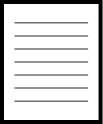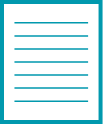More demanding record-keeping requirements in the November draft have been in place since 1 January.

The ATO is just days away from publishing its final guidance on work from home (WFH) expense deductions and said it plans a publicity campaign to alert taxpayers to the changes, which have already taken effect.
The tax industry gave the November draft guidance, which proposed substantial changes to the fixed rate method, a harsh reception with criticism of the “opaque” calculations behind the revised fixed rate of 67c and the “demanding” record-keeping requirements.
Under PCG 2022/D4, the more stringent record-keeping regime began on January 1 and many taxpayers are thought to be unaware of the changes.
The ATO said it was finalising the WFH rules after consultation with the tax industry and would launch a publicity campaign at the same time.
“We will be undertaking a range of communications through various channels that will coincide with the publication of the final PCG later this month,” the Tax Office said.
“Communication after publication of the final PCG will be ongoing and continue into the period for lodgement of 2023 income tax returns.
“We are developing supporting materials, including web content and a fact sheet to assist taxpayers and their advisers.”
The ATO failed to say whether it would postpone the tighter record requirements and believed tax agents would want to help communicate the changes.
“We expect that many tax professionals will have their own preferences for how they like to communicate with their clients, and our information and publications will be available to be used by tax professionals to meet these needs,” it continued.
“We acknowledge and appreciate the important role played by tax professionals and industry associations in development of the revised fixed rate for working from home deductions. Many have been involved in our consultation processes and have supported the development of the guidance materials.”
The initial response from the tax industry last November was damning, with the director of tax communications at H&R Block Mark Chapman one of the sternest critics. He said the PCG gave most people Hobson’s choice when it came to work-from-home deductions.
“Claiming ‘actual costs’ isn’t feasible for many taxpayers — the record-keeping obligations are just too high,” he said. “Therefore for millions of people, they will be forced to claim the 67c an hour fixed rate — which could result in a lower deduction and increased paperwork.”
He said the ATO revisions looked sensible “on the face of it” but short changed taxpayers and imposed fresh obligations.
“The amount that can be claimed is low and the compliance obligations are high — the taxpayer not only needs to keep a record of times spent working from home, but also there is a need to keep an invoice/receipt for each of the additional costs, such as an electricity bill. This is new — it never used to be necessary using either of the old fixed rate methods.”
CPA Australia raised the issue in its budget submission and said the fixed rate method required legislation.
“The ATO’s revised fixed rate for WFH expenses is an administrative method and cannot be used as a valid approach at objection where the Commissioner must apply the general principles,” it said.
“To improve certainty and clarity for the ATO and taxpayers, a legislated fixed rate method for WFH expenses should be introduced. This should be similar to the cents per kilometre method for motor vehicle expenses.
“This measure should also address the current uncertainty about the ability to deduct WFH expenses without a dedicated space, absent the revised fixed rate.”
The ATO said the consultation process had resulted in updates to the final PCG and it is understood that a compendium of comments received would also be published.
By Philip King
06 February 2023
accountantsdaily.com.au






















